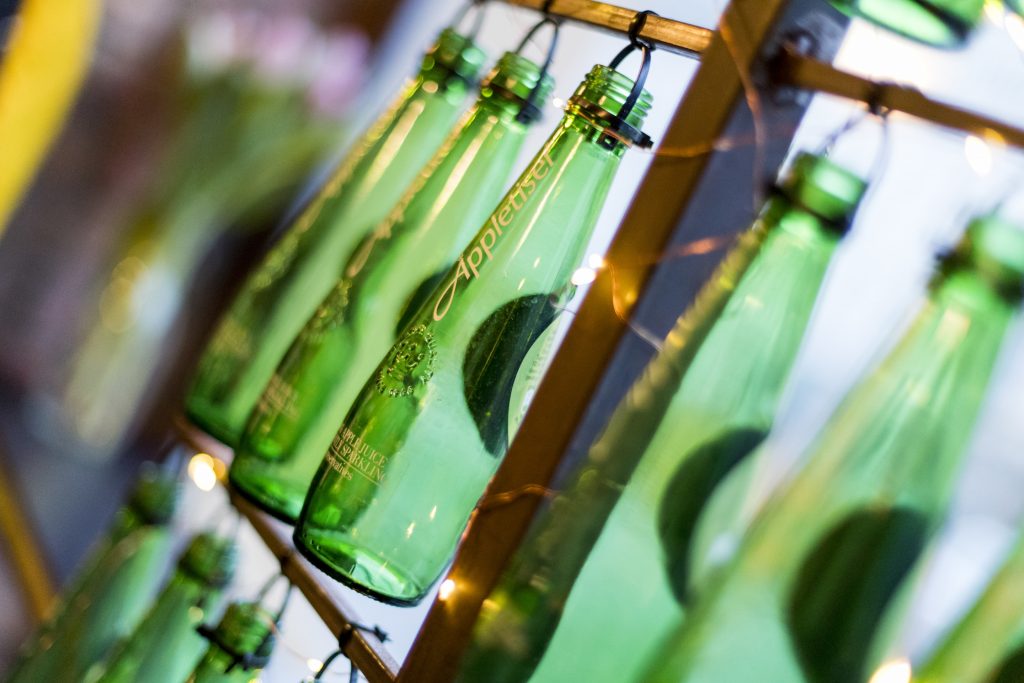In 1936, Edmond Lombardi, of French/Italian origin — with British citizenship, as he had lived and worked in England from a young age — immigrated to South Africa with his wife, Mercia, when he was 38 years old.

They were actually on their way to settle in Australia, but as their ship had a few days stop in Cape Town, they hired a car and drove into the countryside — passing though the Elgin Valley.
How Paul Saad Turned FUTURELIFE® Into A Successful Multinutrient Brand
Edmond’s wife was taken by the rolling hills which she likened to the Cotswolds. That was it, she was sold, Australia was out, and Elgin was in.
Edmond had previously been in the marble business during his stay in the UK, in partnership with an Italian quarry owner in Italy. He manged to sell back his shares which gave him enough capital to purchase a fledgling apple farm of about 80 hectare.
This farm wasn’t making any money yet, so he put his quarrying experience to use, buying a clay quarry and making bricks with another partner he met, George Ratcliffe, who was also invested in the farm. That was Brick & Clay in Belville.
After Brick & Clay went public, the two partners parted company, with George keeping the brick works, while Edmond keeping the farm. By then the farm was making consistent profits, and Mercia had named it Applethwaite after a village in England.
The Rise & Success of Kauai, South Africa’s Number One Healthy Fast Food Brand
Applethwaite Farm
Edmond had absolutely no previous experience in farming of any sort, he didn’t even have a high school education. But what gave him an upper hand was having a keen sense of all aspects in business and also had grasp on the key issues required to make a success.
Soon enough, he realised that in order to succeed with apples, one needed to produce as many as possible from an orchard of the desired quality standard and varieties demanded by the market, and then sort, pack and despatch with minimum loss. And this had all to be done as cost effectively as possible.
American Swiss: How A Small Family Business Grew Into A Large Corporation
Although he didn’t have no clue how to achieve this, he had a strength of employing those who had the skills to carry out his vision. So he recruited an experienced agriculturist, Frank Rozwadowski, who brought along several other Polish experts to the team.
This was followed by an Italian, Dr Mimo Falanga, who was assigned with the task of heading up the technical department. Then there were other locals like Mr Bruwer as builder, John Heynes as engineer, Mr Hommersom as Financial controller, his wife as Packhouse manager, and of course many more over the years.

The main point is he built up a team and never tried to be all things himself. With this team, he managed to find success in apple farming.
How A Child’s Birthday Party Led To The Rise & Success of Browns Corn Dogs
Appletiser
In 1960, Edmond realised that the tightening up of competition on the world apple markets resulted in surpluses of under grade fruit that the local market just couldn’t absorb — this presented an opportunity in the field of processing.
He went to the US and Canada doing a preliminary excursion in search of suitable products, and then sending his son, Dave, to follow up in detail in 1962.
How Needing Family Time Led Mpho Mohaswa To Successfully Launch Ghemere

At that stage, he wasn’t really considering apple juice, so his Dave’s time was mostly spent researching and making apple sauce etc. The products he came back with were good but his father’s marketing “gut feel” said otherwise.
Dissatisfied, Edmond made a trip to Europe and in Switzerland, where he had his Eureka moment — he discovered a clear sparkling apple juice that looked jus like champagne and was immediately sold on the product.
Once again, he deployed his best tactic by engaging the best people on the new venture, namely Dr Nino Costa(ex Nederberg) as local Technical Director, Professor Luthi(head of the World Fruit Juice Organization) as visiting Technical Director, and the services of Stellenbosch University Food Tech laboratories and staff.
That is how Appletiser, the Champagne of Fruit Juices, was developed.

Then began the construction of the factory and the recruitment of German Engineers, Swiss Juice Technologists, and a marketing team.
The Rise & Success of Capitec Bank
Initially this was a project to absorb the 3000 tons of Applethwaite’s own under-grade fruit, but it became such a success that after the 2nd year, another factory was built and doors were open to the industry as a whole.
Not being able to find any willing investors in Elgin, Edmond had to mortgage Applethwaite to the hilt, and eventually brought in Coca Cola in 1979 after selling a 50% stake in the business.
WATCH|| South Africa’s Most Powerful Dam, The Gariep Dam
With Coca-Cola’s distribution channels and marketing skills, the partnership became successful. Appletiser was followed by Liqui-Fruit and Grapetiser.

In 2016, the Appletiser brand was sold to The Coca-Cola Company, and is now available in more than 20 countries worldwide.
Get South Africa’s latest entrepreneurial or business success stories delivered right to your inbox — Sign up to Entrepreneur Hub SA’s newsletter today ⬇️⬇️⬇️




